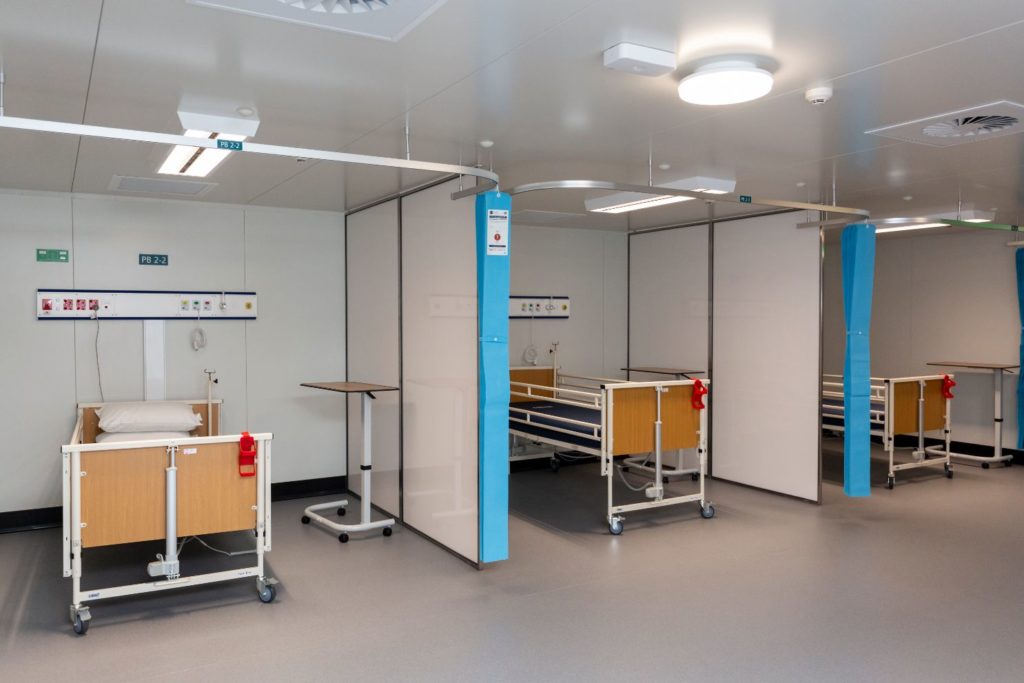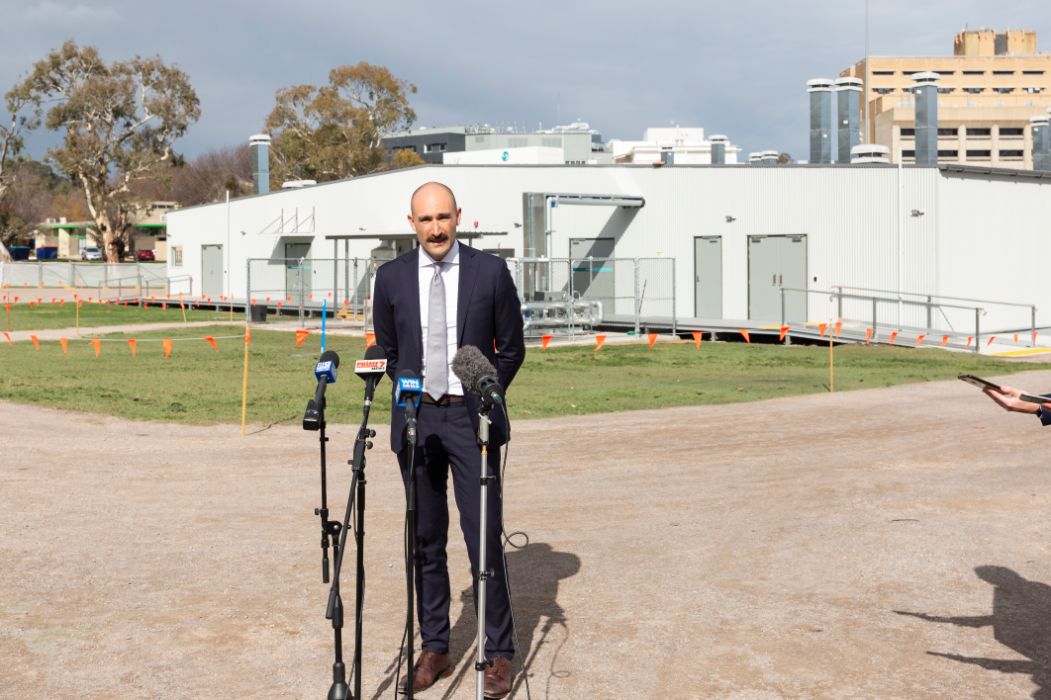Having currently cost around $14 million, the ACT’s rapidly produced temporary COVID-19 surge centre that has commandeered Garran Oval, adjacent to Canberra Hospital, is now ready for action.
However, if the Territory’s current trajectory continues – with no active cases, and only five new instances of COVID-19 having been recorded since 10 April – it might never be activated.
And that wouldn’t upset anyone in the Territory, including health officials.
“No one buys insurance hoping they will crash their car, you have it in case, and this is certainly part of our ‘in case’ plan for the Territory,” said Canberra Health Services (CHS) Deputy CEO, Dave Peffer.
The centre received a certificate of occupancy on Friday 15 May, but even if another COVID-19 outbreak, or wave, were to hit the ACT, the Garran Oval field hospital would only come online if a number of triggers were met.
“The first trigger is to shift us from current capacity to flex … If demand surpasses that level, we move into the surge phase. It’s at that point that we stand up and activate the surge centre,” Mr Peffer said.

The facility itself is a remarkable feat considering it was designed in a week in partnership with the World Health Organization, and subsequently built in 37 days by around 100 contractors.
The materials used in the construction of the field hospital, which include heavy duty refrigeration panels, are highly durable.
It’s been built to withstand constant abrasive chemical cleaning, which would be critical in operation given the nature of COVID-19.
In fact, CHS Canberra Hospital Campus Modernisation Project Director, Vanessa Brady, said the whole building could withstand cyclonic conditions.
One side of the facility will take care of ‘known’ positive cases of COVID-19, while the other will look after ‘suspect’ patients who haven’t yet been confirmed.
With four pods across the entire unit, and a maximum capacity of 51 patients, it’s been designed in such a way that it has multiple pods that can be activated one after the other or all at the same time.
According to Mr Peffer, operations can be scaled up or down as required to meet demand “as and if it’s required”.
The $23 million budgeted for the centre includes $3.5 million worth of equipment and supplies, all of which can be used in the normal course of business if the COVID-19 surge centre remains unactivated.
There is also an approximate $9 million budgeted for the actual running of the facility, but there will be no cost incurred for staffing the facility unless it’s activated.
The temporary field hospital has been built in such a way where it can be demobilised, stored in 24 shipping containers, with a barcode system allowing it to be rapidly reassembled if ever required again.
With Garran Oval being zoned as an open space, there is no possibility of obtaining a planning approval for the facility to remain in place.
“Once the health emergency has passed the facility will be decommissioned, demobilised and the oval remediated,” Mr Peffer said.
According to Mr Peffer, it is “very unlikely” that would take place before the existing flu season ends.



